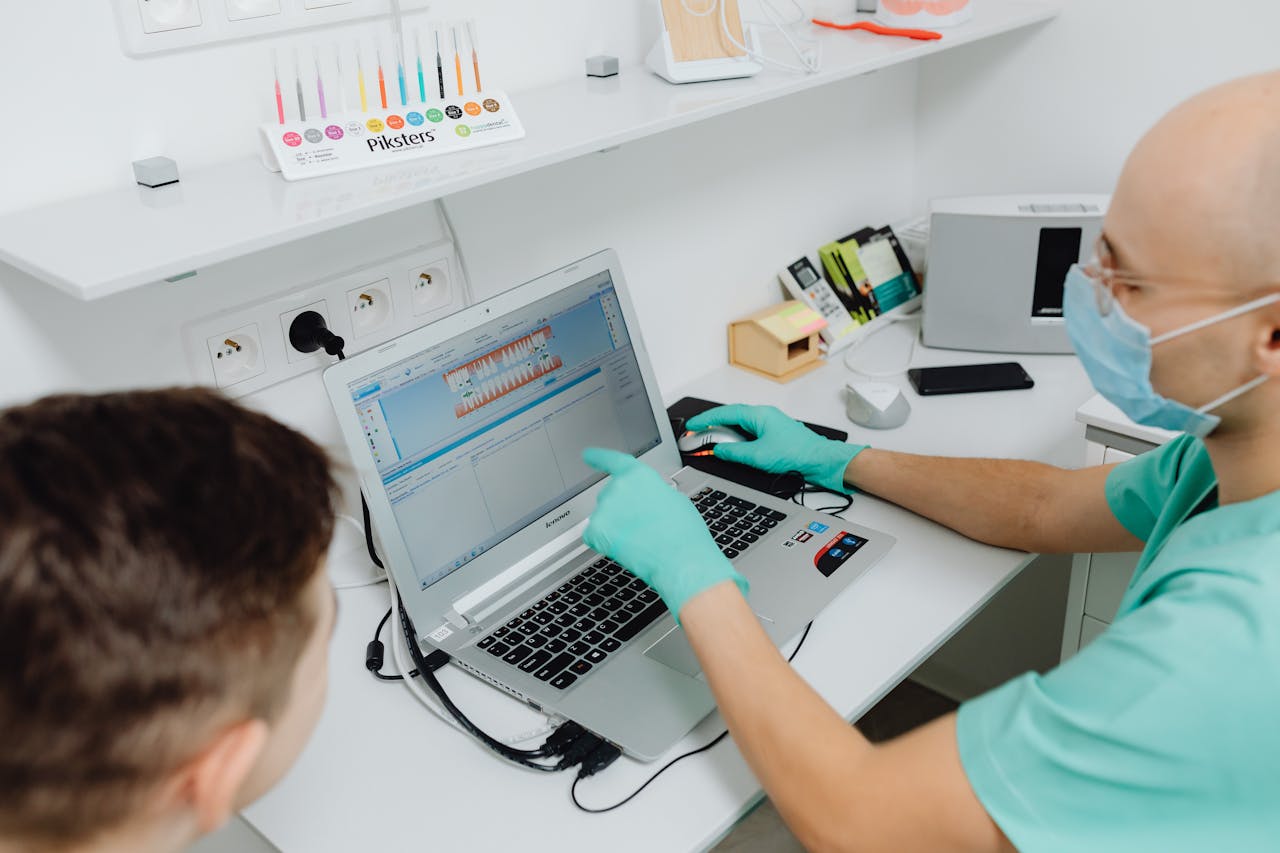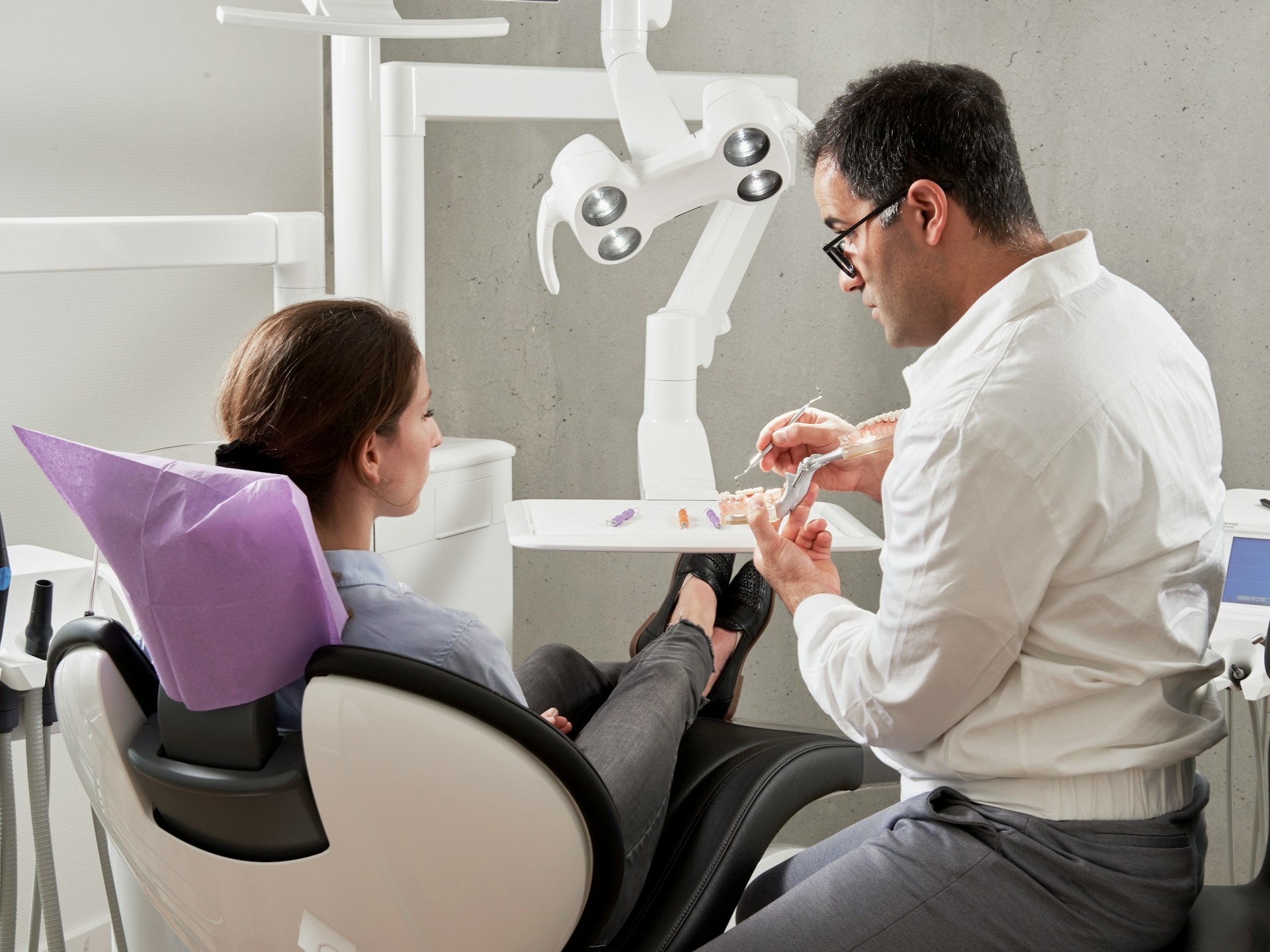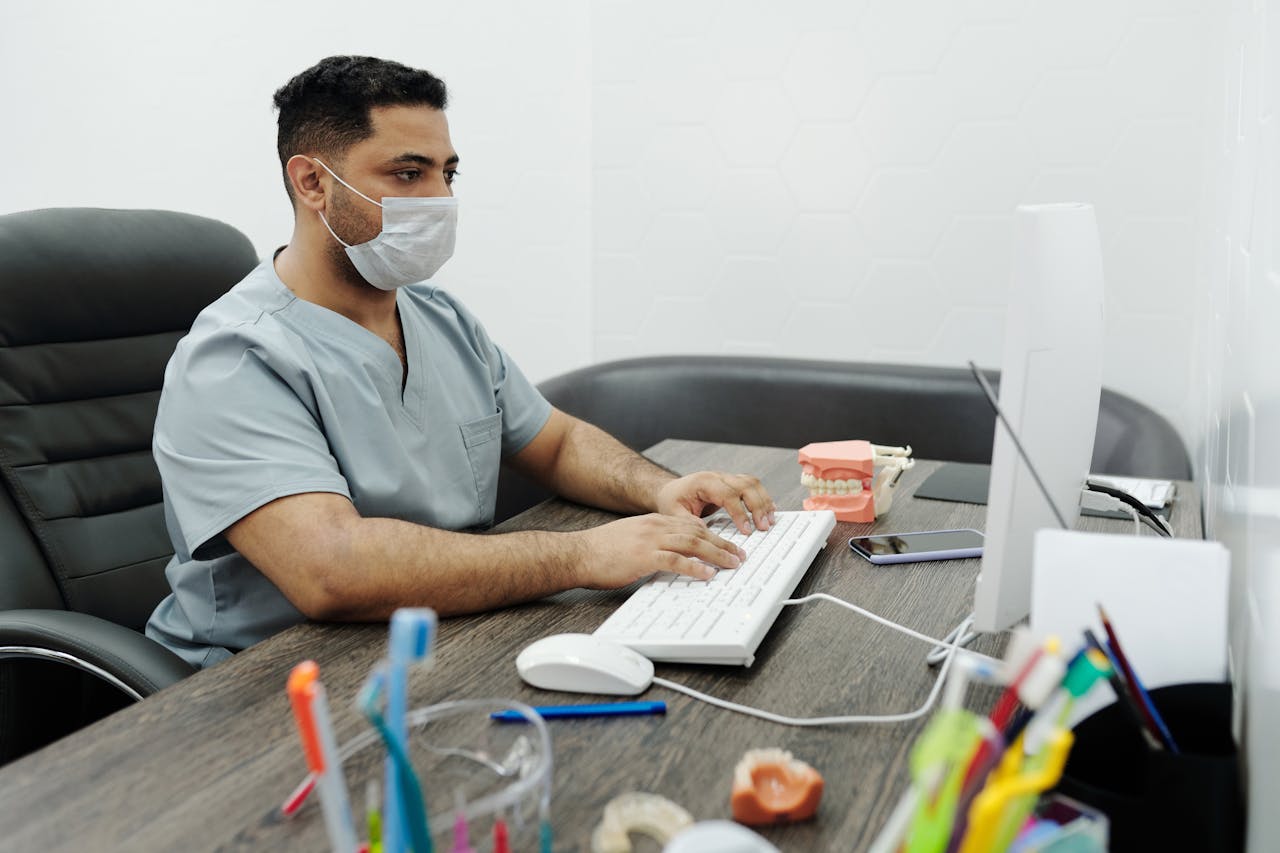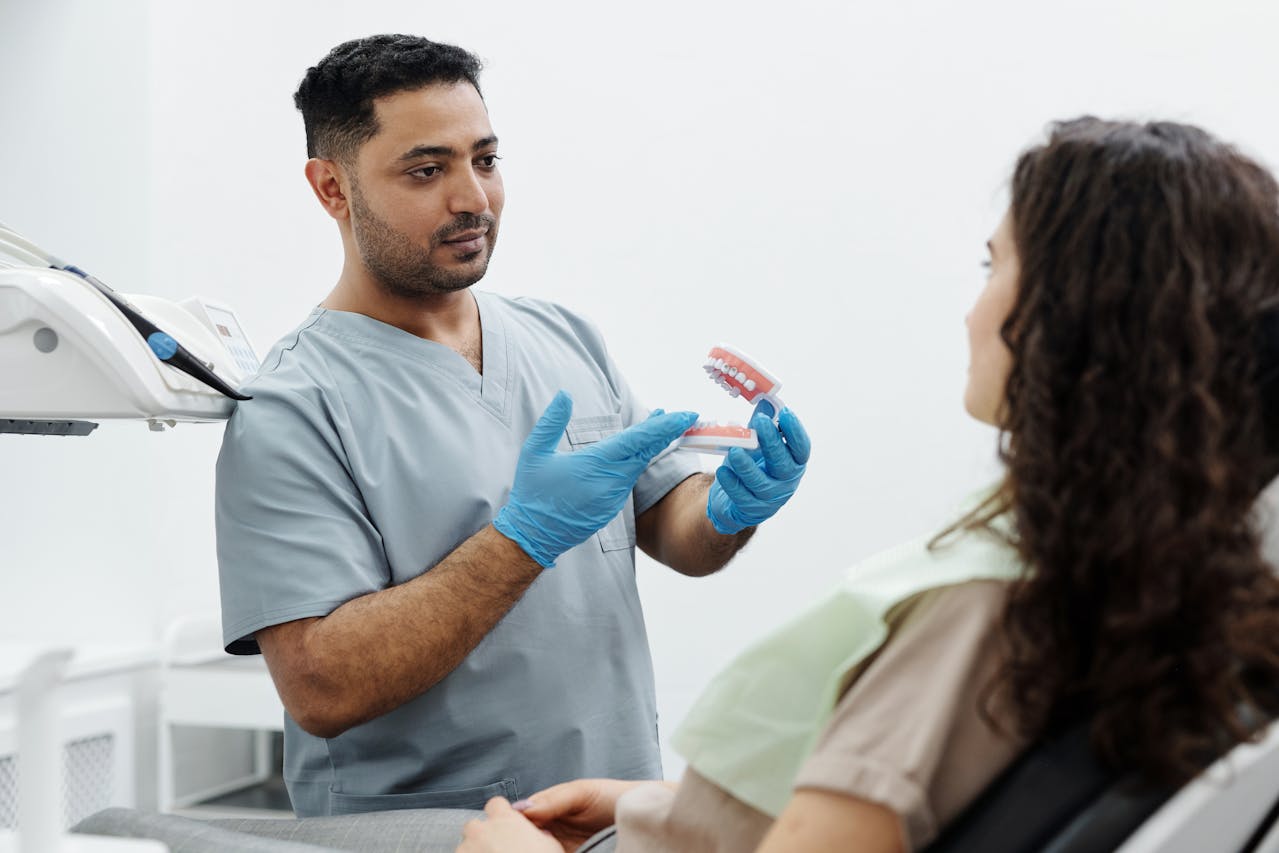How to Reduce Overhead Costs in Dental Practices with AI

Dental practice overhead has reached a critical tipping point, with costs now consuming 61.8% of collected income across general practices—exceeding industry benchmarks and threatening profitability. Personnel costs alone account for 28.9% of revenue, while automation has helped the healthcare industry avoid over $20 billion in administrative spending. For dental practices seeking to regain control of their margins, AI receptionist technology offers a proven pathway to reduce staffing burden, capture missed revenue, and improve operational efficiency without sacrificing patient care quality.
Key Takeaways
- Dental practice overhead averages 61.8% of collected income, with personnel costs representing the largest controllable expense at 28.9% of revenue
- AI automation delivers 50%-70% reduction in administrative tasks, allowing practices to operate with leaner teams or reallocate staff to patient-facing roles
- Practices implementing AI scheduling and reminder systems reduce no-show rates by 22.95%, protecting productive chair time and revenue
- Electronic verification and automation saved the healthcare industry over $20 billion in administrative costs, with individual practices achieving $580 million in potential annual savings
- Successful AI implementation requires 40%-60% of the budget allocated to training and workflow optimization, not just software acquisition
- ROI typically achieved within 12-18 months for comprehensive AI systems, with administrative time savings appearing immediately
- Case studies show practices generating $56K+ in new revenue in 30 days and $100K+/month uplift with AI receptionist implementation
Understanding Overhead Costs in Dental Practice Management
Dental practice overhead encompasses all operating expenses required to run a practice, excluding the dentist's personal compensation. According to industry benchmarks, the median total overhead represents 61.8% of collected income, leaving 38.2% for doctor compensation and profit. This cost structure breaks down into four major categories:
- Personnel costs: 28.9% of revenue—the largest expense category
- Clinical costs: 11.1% covering supplies and materials
- Facility and equipment: 9.7% for rent, utilities, and equipment
- General business costs: 10.1% including software, marketing, and insurance
For specialty practices, overhead structures differ slightly, with pediatric practices typically running at lower percentages around 53.2%. Understanding these baseline costs is essential for identifying where AI can deliver the most significant impact.
Fixed vs. Variable Overhead in Dentistry
Fixed overhead costs—rent, equipment leases, insurance premiums—remain constant regardless of patient volume. Variable overhead costs, including front desk wages, supplies, and utilities, fluctuate with practice activity. AI primarily impacts variable overhead by automating labor-intensive administrative functions, allowing practices to scale operations without proportionally increasing staffing costs.
Common Overhead Costs Examples in Dental Offices
Dental practices face a complex array of recurring expenses that collectively determine profitability. The most significant overhead categories include:
Labor Costs: The Largest Overhead Component
Personnel expenses dominate dental practice budgets, with staff salaries exceeding the recommended 25-28% range in many practices. These costs include:
- Front desk receptionist wages and benefits
- Administrative staff for billing and insurance verification
- Overtime pay during peak periods
- Training expenses for new hires
- Vacation and sick leave coverage
The average cost of dental assistant turnover exceeds $21,000 in at-risk revenue during vacancy, while a significant amount of dental assistants changed jobs within the last year, compounding labor cost challenges.
Facility and Technology Overhead
Beyond personnel, practices face substantial fixed costs:
- Rent and utilities for clinical space
- Equipment leasing and maintenance
- Practice management software subscriptions
- Phone system costs and telecommunications
- Compliance and security infrastructure
Approximately 80% of practices employ dental practice management software, representing a necessary but significant recurring expense.
Why High Overhead Threatens Practice Growth and Profitability
Excessive overhead creates a cascade of challenges that limit practice potential and competitive positioning. When overhead exceeds industry benchmarks, practices face constrained cash flow, reduced ability to invest in patient experience improvements, and vulnerability to market disruptions.
The Hidden Cost of Missed Patient Calls
Beyond documented overhead categories lies a particularly insidious cost: missed patient calls. Each unanswered call represents lost appointment revenue, with new patient acquisition costs wasted when prospects reach voicemail instead of a live response. Practices without after-hours coverage lose weekend and evening inquiries—prime times when working patients seek dental care.
The opportunity cost compounds when considering that prospective patients typically call only 1-2 practices before booking. Missing that initial call often means losing the patient permanently to a competitor who answered. For practices looking to stop missing patient calls, this represents one of the most impactful overhead problems to solve.
How Overhead Limits Investment in Patient Experience
When 61.8% of revenue disappears into overhead before doctor compensation, practices have limited resources for experience enhancements. Staff burnout increases as administrative burden grows without corresponding staffing increases, directly impacting patient satisfaction. Reducing front desk burnout becomes essential not just for employee retention but for maintaining quality patient interactions.
The Role of AI in Dental Practice Management Software
Artificial intelligence in dentistry uses machine learning algorithms to analyze data, automate administrative processes, and optimize workflows. According to the California Dental Association, AI systems employ convolutional neural networks to process vast amounts of information quickly, detecting patterns and automating repetitive tasks that traditionally required significant human labor.
In dental applications, AI performs multiple functions:
- Automated appointment scheduling with optimization algorithms
- Insurance verification and eligibility checks
- Billing automation and claims processing
- Patient communication and FAQ responses
- Predictive analytics for practice management
The technology integrates with existing practice management systems including OpenDental, Dentrix, EagleSoft, and Denticon, working as an assistive tool that enhances rather than replaces human expertise. Arini's AI receptionist platform exemplifies this integration approach, connecting seamlessly with major PMS platforms to automate call handling and scheduling while maintaining HIPAA compliance.
AI vs. Traditional Practice Management Tools
Traditional dental software manages data but requires constant human input. AI systems learn and adapt, continuously improving accuracy as they process more information. Where conventional tools simply store patient records and appointment schedules, AI actively optimizes scheduling patterns, predicts no-show probability, and automates routine communication without manual triggers.
How AI Receptionists Reduce Front Desk Staffing Costs
Personnel costs representing 28.9% of revenue create the single largest opportunity for overhead reduction through AI. Virtual receptionist technology provides 24/7 coverage without the salary, benefits, vacation time, and training costs associated with human staff.
AI receptionists deliver measurable cost savings through:
- Elimination of after-hours staffing: No overtime or evening shift premiums required
- Vacation and sick leave coverage: AI never requires time off
- Reduced training expenses: Systems learn practice protocols once and apply them consistently
- Scalability without hiring: Handle volume spikes without adding headcount
- Consistent performance: No burnout, fatigue, or interpersonal variability
Arini's platform answers 100% of inbound calls 24/7, allowing front-desk staff to focus on in-office patient experience instead of routine call handling. For practices aiming to reduce front desk labor costs, this represents immediate overhead relief while improving service quality.
Redirecting Staff to High-Value Patient Interactions
Rather than eliminating positions, many practices redeploy administrative staff to revenue-generating activities. Front desk personnel freed from phone duties can:
- Conduct pre-appointment insurance verification and patient preparation
- Handle complex billing questions requiring human judgment
- Provide enhanced in-office patient experiences
- Coordinate treatment plan follow-ups
- Manage patient retention initiatives
This strategic reallocation transforms overhead costs into patient care investments, improving both efficiency and satisfaction metrics.
Capturing Missed Revenue: The Overlooked Overhead Problem
While traditional overhead focuses on documented expenses, missed revenue from unanswered calls represents a hidden cost that often exceeds visible administrative spending. Each missed call creates multiple layers of loss:
- Wasted patient acquisition marketing spend
- Lost new patient lifetime value
- Reduced schedule utilization
- Competitive disadvantage to practices that answer promptly
Average no-show rates reach 15% across dental practices, with some experiencing rates as high as 30%. Each empty appointment slot represents 45-60 minutes of unproductive chair time and lost revenue that overhead costs continue to consume.
The True Cost of Every Unanswered Patient Call
Consider the financial impact of typical call patterns:
- New patient calls that reach voicemail: 60-70% never call back
- After-hours inquiries: 85%+ go to competitors with 24/7 availability
- Weekend calls: Lost entirely without automated response systems
- Appointment confirmation calls: Time-consuming for staff, often incomplete
Practices implementing AI-powered call answering eliminate voicemail falloff entirely, converting previously lost opportunities into booked appointments even during evenings and weekends.
Automating Appointment Scheduling to Lower Administrative Overhead
Manual scheduling consumes substantial staff time—phone tag with patients, calendar coordination, provider availability checking, and confirmation calls. Practices using management software report a 50% reduction in administrative tasks through automation.
AI scheduling systems provide sophisticated capabilities:
- Block scheduling: Automatically allocate appropriate time based on procedure type
- Provider availability management: Real-time coordination across multiple dentists
- Custom scheduling rules: Practice-specific protocols for new vs. returning patients
- Double-booking prevention: Intelligent conflict resolution
- Automated confirmations: SMS and email reminders without staff involvement
Arini's call answering and scheduling module books new and returning patient appointments directly into PMS systems with custom rules for appointment types and provider availability, eliminating manual scheduling labor while ensuring consistent protocol adherence.
Eliminating Phone Tag with Instant Booking
Traditional scheduling requires multiple touchpoints—initial call, callback if staff is busy, confirmation call, reminder call. AI systems handle instant scheduling in a single interaction, dramatically reducing staff hours per appointment booked. Patients appreciate immediate confirmation, while practices benefit from higher conversion rates and reduced administrative burden.
Reducing Call Volume Escalation with AI-Powered Patient FAQs
Nearly half of practice revenue ties to insurance claims processing, with staff spending hours answering routine questions about coverage, billing, and office logistics. AI-powered FAQ systems deflect these repetitive inquiries, freeing staff for complex cases requiring human judgment.
Common dental FAQs AI handles effectively:
- Insurance coverage and verification questions
- Office hours and location directions
- Billing and payment plan information
- Pre-appointment preparation instructions
- Post-procedure care guidelines
- Emergency vs. routine appointment triage
Arini's patient FAQ module responds to common questions about insurance, billing, and office hours without staff involvement, reducing call volume escalated to humans. The system learns over time, expanding its knowledge base as practices add new FAQs, ensuring consistent and accurate information across all patient interactions.
Freeing Staff from Repetitive Questions
When AI handles routine inquiries, staff interruptions decrease dramatically. Hygienists and dentists can focus on clinical care without constant disruption for simple questions. Front desk personnel manage only complex situations requiring human expertise, judgment, or empathy—vastly improving efficiency and job satisfaction.
Tracking ROI and Overhead Savings with AI Analytics
Measuring AI impact requires tracking specific KPIs that demonstrate overhead reduction. The ADA recommends monitoring production vs. collections ratio, accounts receivable days, overhead percentage, and staff productivity per provider.
AI analytics platforms provide comprehensive tracking:
- Call metrics: Total calls, answered vs. missed, response time
- Appointment conversion: Calls to scheduled appointments ratio
- Revenue attribution: Booked appointments to production value
- Cost per appointment: Total AI cost divided by appointments booked
- No-show tracking: Reminder effectiveness and attendance patterns
- Financial impact: Revenue captured that would have been lost
Arini's analytics module tracks call volume, answered calls, missed calls, and booked appointments with revenue impact metrics and real-time notifications, providing complete transparency into system performance and ROI.
Key Metrics to Monitor for Overhead Reduction
Practices should establish baseline measurements before AI implementation:
- Current overhead percentage by category
- Administrative hours spent on scheduling, calls, and insurance verification
- Claims acceptance rate and resubmission frequency
- No-show rate and last-minute cancellation percentage
- Average days in accounts receivable
Monthly tracking against these baselines demonstrates concrete overhead reduction, typically showing measurable improvement within 6-8 months and full ROI in 12-18 months for comprehensive systems.
Implementing AI in Multi-Location Dental Groups and DSOs
As of 2023, only 72.5% of dentists are private practice owners (down from 84.7% in 2005), with 16% now affiliated with Dental Support Organizations. This consolidation creates both challenges and opportunities for AI adoption.
Multi-location groups require:
- Centralized management: Consistent protocols across all locations
- Location-specific customization: Local phone numbers, hours, and provider schedules
- Unified reporting: Aggregate performance metrics with location breakdowns
- Scalable implementation: Efficient deployment across multiple sites
- Regional routing: Intelligent call distribution based on caller location
Arini's integration and workflow customization supports multi-location DSOs with routing rules and customizable call flows per practice or location, featuring one-click PMS integrations and minimal disruption during implementation.
Scaling Overhead Savings Across Multiple Sites
DSOs achieving the greatest AI benefits standardize core workflows while allowing local customization for patient demographics and market conditions. Practices scaling DSO operations leverage centralized AI deployment to achieve economies of scale impossible for individual practices, with overhead reduction compounding across the entire organization.
Case Study: Real Overhead Reduction Results from AI Adoption
Real-world implementation data demonstrates AI's measurable impact on dental practice overhead and profitability. Two documented case studies from Arini's clients provide concrete evidence:
Kare Mobile: $56K in 30 Days
Kare Mobile Dentistry implemented Arini's AI receptionist platform and achieved:
- $56,000+ in new revenue within the first 30 days
- Significant reduction in missed calls
- Improved appointment booking conversion
- Enhanced patient satisfaction with 24/7 availability
The practice captured previously lost opportunities from after-hours and high-volume periods when human staff couldn't answer every call promptly.
Unified Dental Care: 24% Profit Boost
Unified Dental Care reported even more dramatic results:
- $100,000+ monthly revenue uplift after implementation
- 24% profit increase through overhead reduction and revenue capture
- 80% reduction in missed calls across all practice locations
- Improved staff satisfaction as administrative burden decreased
These case studies demonstrate that AI receptionist technology delivers measurable financial impact within weeks, not years, with overhead reduction creating permanent margin improvement.
Choosing the Right AI Receptionist for Your Dental Practice
Selecting AI technology requires evaluating multiple factors beyond basic features. Successful implementation depends on choosing systems aligned with your practice's specific overhead challenges, existing technology infrastructure, and patient demographics.
Must-Have Features in AI Dental Receptionists
Essential capabilities include:
- PMS integration: Seamless connection with OpenDental, Dentrix, EagleSoft, or Denticon
- HIPAA compliance: Full security certifications and Business Associate Agreements
- 24/7 availability: True round-the-clock coverage including holidays
- Customizable call flows: Practice-specific protocols and routing rules
- Multi-language support: Bilingual capabilities for diverse patient populations
- Analytics and reporting: Comprehensive performance tracking
- Quick implementation: Minimal disruption to existing operations
Arini's platform meets all these requirements with HIPAA-compliant infrastructure, seamless PMS integration across major platforms, customizable call flows, and quick implementation designed for minimal practice disruption.
Questions to Ask Before Implementation
Evaluate potential AI vendors thoroughly:
- What is your typical implementation timeline from contract to go-live?
- How do you handle training for our staff and knowledge base customization?
- What level of technical support do you provide, and what are response times?
- How do you measure and report ROI and system performance?
- What backup procedures exist if the system experiences downtime?
- Can we pilot the system with a subset of calls before full deployment?
Practices that invest time in thorough vendor evaluation and phased implementation achieve faster ROI and smoother transitions than those rushing deployment.
How Arini Powers Dental Practice Overhead Reduction
While many platforms offer basic automation, Arini's comprehensive AI receptionist delivers the sophisticated capabilities dental practices need to achieve measurable overhead reduction. Our platform transforms practice economics from overhead-burdened to profit-optimized through proven technology.
Arini excels where others fall short through:
- 24/7 Call Coverage: Our AI receptionist answers 100% of inbound calls around the clock, eliminating missed call revenue leakage and allowing staff to focus on in-office patient experience instead of phones
- Seamless PMS Integration: One-click integration with OpenDental, Dentrix, EagleSoft, and Denticon ensures appointments flow directly into your existing systems without manual data entry or workflow disruption
- Intelligent Scheduling: Custom rules for appointment types, provider availability, and block scheduling automate complex coordination that previously consumed hours of staff time daily
- Patient FAQ Automation: Our knowledge base handles routine questions about insurance, billing, office hours, and directions, reducing staff interruptions while ensuring consistent, accurate responses
- Multi-Location Support: DSOs and group practices leverage our location-specific routing and centralized management to scale efficiency across multiple sites with minimal per-location setup
- Comprehensive Analytics: Real-time dashboards track call metrics, appointment conversion, revenue attribution, and ROI with complete transparency into system performance and financial impact
- HIPAA Compliance: Full security certifications, encrypted communications, and role-based access controls ensure patient data protection throughout all interactions
Arini clients consistently report substantial financial improvements, with practices achieving significant revenue increases within 30 days and sustained overhead reduction creating permanent margin expansion. Our proven integration approach ensures your practice captures the full benefit of AI automation without sacrificing the human touch that builds patient loyalty.
For practices ready to transform overhead costs into competitive advantages, Arini provides the technology platform that makes measurable overhead reduction achievable within months, not years.
Frequently Asked Questions
Q: Will implementing AI receptionist technology force me to lay off my front desk staff?
A: No—successful AI implementation typically redeploys rather than eliminates staff. Most practices reassign front desk personnel to higher-value activities like in-office patient experience, complex insurance coordination, treatment plan follow-ups, and patient retention initiatives. AI handles repetitive phone tasks and after-hours calls, while human staff focus on situations requiring judgment, empathy, and complex problem-solving. Many practices maintain the same headcount but achieve significantly higher productivity and patient satisfaction by optimizing how staff time is allocated.
Q: How long does it typically take to see ROI from AI practice management investments?
A: Administrative time savings appear immediately upon implementation as AI begins handling calls and scheduling. Revenue cycle improvements accumulate over several billing cycles as claims processing becomes more efficient. Most practices see measurable overhead reduction within 6-8 months, with full ROI typically achieved in 12-18 months for comprehensive AI systems. Practices that invest 40% of their technology budget in training and workflow optimization rather than just software see faster ROI than those neglecting change management.
Q: What happens if the AI system misunderstands a patient or makes a scheduling error?
A: Modern AI dental receptionists include multiple safeguards against errors. Systems confirm all appointments with patients, send immediate notifications to staff for verification, and escalate complex or unclear situations to human team members. Most platforms operate with 95%+ accuracy rates for routine tasks, with continuous learning improving performance over time. Practices should maintain human oversight protocols during the first 30-60 days of implementation, gradually reducing supervision as they gain confidence in system performance. Quality AI vendors provide detailed logs of all interactions, allowing practices to audit performance and identify areas for knowledge base refinement.
Q: Can AI systems handle emergency dental calls appropriately, or will urgent patients be frustrated?
A: Advanced AI receptionists include emergency triage protocols that identify urgent situations through keyword detection and patient description of symptoms. When the system detects potential emergencies—severe pain, trauma, uncontrolled bleeding, infection signs—it immediately escalates to designated emergency contact numbers or provides clear instructions for immediate care while notifying the on-call dentist. Practices can customize emergency routing by time of day, with after-hours emergencies directed to answering services or provider cell phones while business-hour emergencies transfer directly to staff. The key is programming comprehensive emergency protocols during implementation so the AI recognizes urgent situations and responds appropriately.
Q: How do AI systems maintain HIPAA compliance when handling sensitive patient information over the phone?
A: HIPAA-compliant AI platforms employ multiple security layers including encrypted data transmission, secure cloud storage with access controls, regular security audits, and Business Associate Agreements with healthcare providers. Reputable vendors maintain SOC 2 Type II certification or equivalent, demonstrating third-party verified security practices. AI systems should never store unnecessary patient information, using role-based access to ensure data minimization principles. Before implementing any AI solution, practices should verify the vendor's compliance documentation, review their security infrastructure, and ensure proper BAAs are executed. Practices maintain responsibility for HIPAA compliance even when using third-party AI, so vendor selection requires thorough due diligence.









